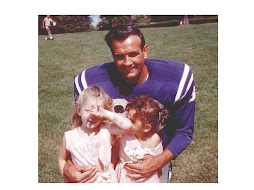 |
| Stara synagogue |
 |
| Jewish Cemetery Krakow |
Krakow is a city rich in history with an impressive castle, a magnificent and imposing central square, and one of the oldest universities in Europe (counting Copernicus and Pope John Paul II as graduates). A thriving Jewish community emerged though they were "relocated" to Kazimierz by King Kazimierz the Great in 1335. Here they lived, worked and played until the death knoll tolled in 1939 with the Nazi invasion of Poland. The first full day of our
"Roots Adventure" would explore a critical slice of the history of Krakow by tracing Jewish life there-from economic and intellectual pinnacle to ghetto to deportation and then on to Auschwitz-Birkenau.
Today, one can still visit more than 7 surviving synagogues within a few city blocks. The Stara (old) synagogue has been lovingly restored and now serves as a museum. Most evocative for me was the cemetery-which sustained extensive damage at the hands of the Nazis but now has a serenity that pays tribute to the contribution of Jews to Poland and Krakow. In addition, pieces of damaged and desecrated tombstones found throughout Krakow (the Nazis classically used them to build roads) have been fashioned into an evocative memorial.
 |
| Krakow's "Wailing Wall" |
Kazimierz has now become one of the most fashionable districts of Krakow and side by side with Jewish historical sites are cafes, art galleries, restaurants and expensive apartments. I also learned of a fascinating connection to NYC through General
Kosciuszko-who fought in the Revolutionary War (for which he is honored by a bridge between Queens and Brooklyn) and then exported those radical ideas to his homeland to foster an uprising against both Russia and Prussia.
 |
| Memorial at Plaszow Concentration Camp |
We then followed the plight of the Jews across the Vistula River to Podgorze, the site of the ghetto. Here I heard the inspiring tale of a pharmacist (non-Jewish) who refused to move his store after the Jewish resettlement and then served as a conduit for black market supplies, secret meetings of the Jews and escape! (The Pharmacy under the Eagle) This was the first of many heroic stories we would hear of "ordinary" individuals who would try and save people from the Holocaust. The main square of the ghetto is now marked by a striking sculpture of empty chairs which contrasts strikingly with the frenetic traffic of a thriving Krakow whizzing by. Other than this memorial, the ghetto has otherwise been erased by modern Krakow with just two small remnants of the ghetto wall still standing (most who survived life in Krakow's ghetto were deported east to Belzec). The final stop in our exploration of Jewish life in Krakow the Plaszow Concentration/Labor camp. This small but deadly camp was located adjacent to the ghetto and run by a brutal, sadistic commander. As the Soviet's approached near the end of the war, the camp was abandoned and the remaining prisoners marched to Auschwitz. Today, the site is a designated park inhabited only by trees, wildlife and a striking sculpture that looks away from Krakow toward Auschwitz-Birkenau.
In just 4 hours, I had followed a history that spanned hundreds of years. We all study the Holocaust but somehow, tracing the history of this long-standing, thriving Jewish community (65,000 pre-war) to complete decimation gave me greater insight and of course, great sadness.
But our day was barely half over-now we departed for Auschwitz-Birkenau...





No comments:
Post a Comment